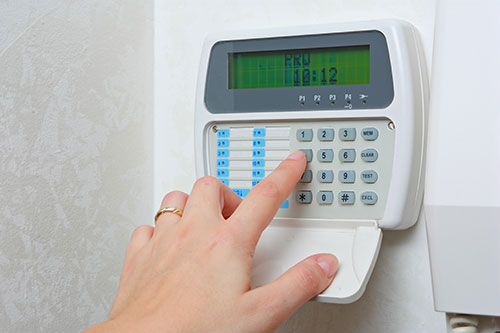Remember when homes automating everything from cooking dinner to dimming the lights was a science fiction fantasy? Today the rapidly growing market of smart gadgets and devices infiltrates every part of our home. Just look to the smart kitchen. Samsung’s smart fridge lets users manage groceries and the entire household from a family hub. Set the thermostat, dim your lights, stream your music and add digital pictures to a family board all from one place.

Although the rise of smart technology may make our lives more convenient, it also leaves us open to vulnerabilities. Engadget reported that hackers remotely accessed a smart TV’s built-in camera, taking a photo of a couple, and then harassing them with the image. As these stories become more mainstream, it’s crucial to protect our smart homes and all that’s inside.
Enhance Your Cyber Security
Your first line of defense in protecting your smart home is enhancing your cybersecurity. Shop around for malware protection from a company like Avast to prevent device hijacking so you can stay in control of your home. But what happens if your information is compromised and your sensitive data is exposed?
An identity theft protection service can also help monitor your activity, stop fraudulent activity, and make sure your credit stays safe. Get started by grabbing a LifeLock discount to find affordable, 24/7 service to prevent malicious behavior before it even starts.
Change Default Passwords
Getting your smart home up and running isn’t a set it and forget it event. Make sure all of your default passwords are changed right away. Otherwise, everything from a baby monitor to a thermostat with smart technology can easily be hacked by using well-known default passwords.
Think it can’t happen to you? According to a report published by the International Conference on Smart Card Research and Advanced Applications, researchers found 14 out of 16 common off-the-shelf smart devices and gadgets were hacked within 30 minutes using common passwords.
Set up Two-Factor Authentication
There’s a relatively easy way to bolster your security: use two-factor authentication. Most smart devices, not to mention email and online banking, offer two-factor password authentication. Once you log into a device or system with your password, it sends a code to your phone to enter as an extra measure of protection. The added step also requires that you have your phone in your hand, making it that much harder for hackers to work around and break into your smart home.
Install a Security System
Focusing on smart home security is paramount to your safety, but it shouldn’t replace a good security system to keep intruders out. A system like Ring Security offers a no-frills system with a base station, keypad, and contact sensors that alert your smartphone and the authorities during an intrusion. The combination of a smart home safety plan, as well as a security plan for the outside of your home, offers comprehensive protection from inside to out.

Smart homes can revolutionize how you live and simplify your daily living. But they also require a focus on safety. From protecting yourself from identity theft to setting up the right security system, you can rest easy knowing your home is safe from prying eyes.


